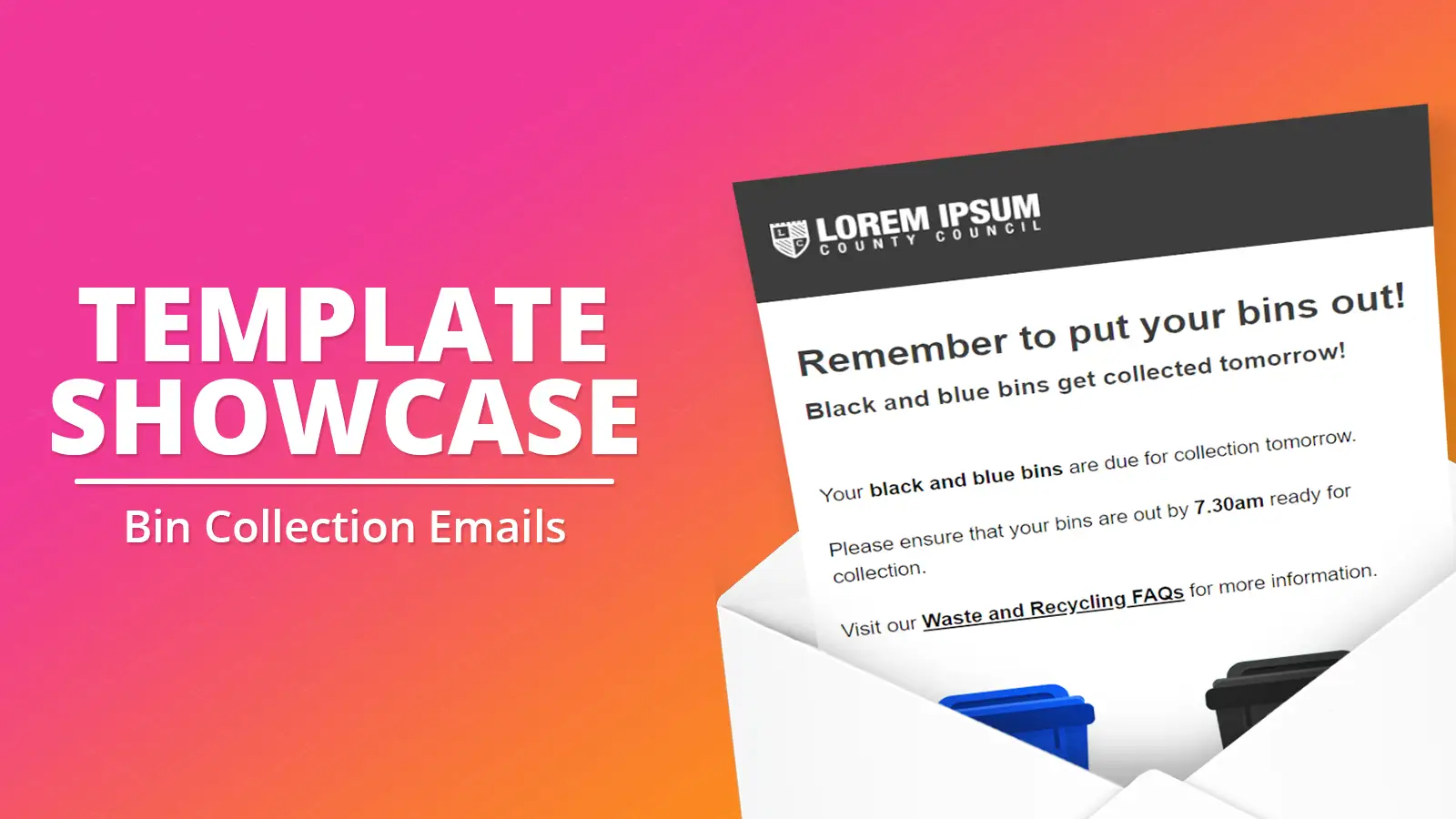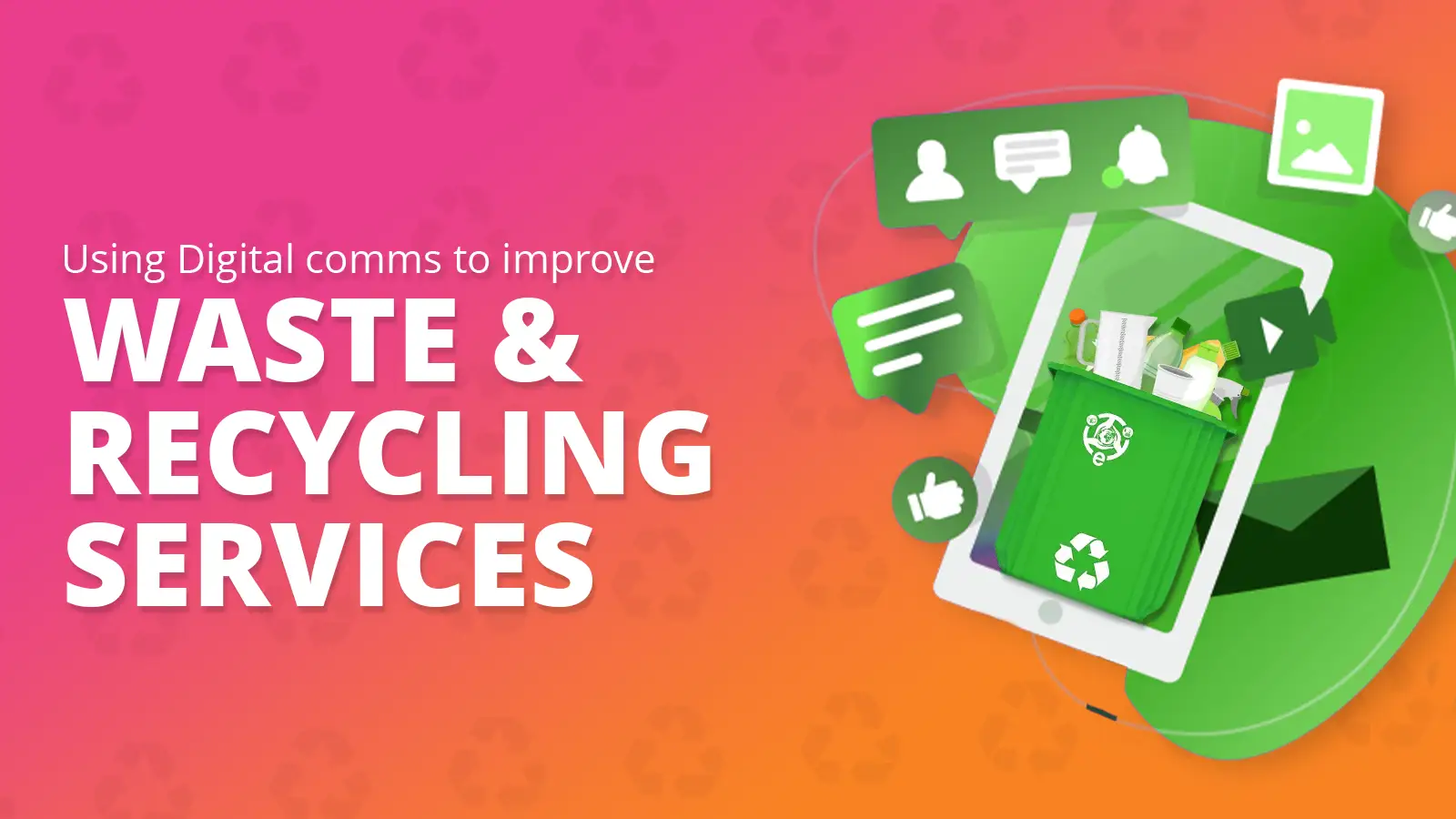Blog
CATEGORY: Best practicedigital-marketingPublic Sectoremail-marketing
A garden waste campaign that was anything but rubbish

Whether your council is launching a paid-for garden waste service for the first time or wants to increase subscriber numbers, a well-planned and executed campaign is key.
What makes an award-winning email campaign?
A single email is never an end in itself, it is always a step in a journey towards an outcome – and whilst your audience’s engagement may give you that warm fuzzy feeling, when they respond and help you achieve your objective that is when it is really worthwhile. Email has the added benefit of message reinforcement over time whils being unobtrusive.
Last year we had the honour of joining the roster of esteemed peers in judging an Unaward for the first time, and of course we had to choose Best Email campaign.
So what do you do if you want to drum up interest among your residents using email? Take a look at our winner’s entry from December’s UnAwards 2023, Basildon Borough Council (go to the Comms:Files resource website and type “Basildon” into the search engine).
Basildon needed 23,000 sign-ups to break even on the cost of a new paid-for garden waste service that they were introducing in June 2023.
The comms team exceeded this (with 32,000!) using a series of ‘explainer’ emails, early access offers, and follow-up nudges encompassing subtle changes in theme and language.
The Problem:
This new service is optional for residents and is the first time a paid service had been introduced to any local waste collections. The service is part of a wider programme of modernisation across Basildon’s waste services, which received relatively negative sentiment across social media. The council would need to achieve 23,000 signups in order to break even on the cost of the service.
What did they do?
To reach the widest audience possible with the lowest cost, the Basildon team looked toward email newsletters. This audience was proven to be more engaged with council communications, having chosen to sign up for email communications in the first place, and generating significantly higher link clicks on average than on social media content. Through email, it is possible to share much more detail about the scheme - it's benefits, environmental context, and even alternative options - versus the short form content on social media.
Targeting the primary e-newsletter audience (39,000 email addresses) to test messaging; generate interest in the optional scheme; and employ behavioural science to encourage the majority of the required sign ups.
Through initial mailouts in February, the team garnered interest in the new service by encouraging readers to enter their email address to be kept informed about the upcoming launch. This generated a list of approx. 18,000 'pre-subscribers.'
This group was targeted first - sending them 'explainer' emails with full details about the upcoming scheme and giving them special access to sign up before the wider public. Splitting the emails over a period of several days allowed us to monitor usage of the new sign-up form, and automatic follow-ups allowed us to target recipients who had not fully registered for the new service after a few days of receiving their first email. Further emails were also sent a few days later to anyone who had still not fully registered. Each follow-up email included a change in the language - focussing on the number of residents who had already signed up and re-framing the benefits of the scheme.
Success was measured in the number of conversions - how many of the 'pre-subscribers' turned into full subscribers, and at which point in the campaign. This allowed us to continue developing the most effective story to sell the service to 'harder to convince' audiences who had not pre-subscribed.
After two weeks 13,000 of the original 18,000 had converted to full subscriptions - achieved with no more than four rounds of emails.
The campaign was then opened up to the wider email audience (39,000) using the refined text and nudge techniques to increase sign-ups (e.g. '13,000 of your neighbours have already signed up, find out why'). Repeated emails to this group generated a further 11,000 sign-ups over the next two weeks, bringing us to 24,000.
Using all the learnings from these two email campaigns the team were able to open the subscription form to all residents via social media. In the final two weeks we generated a further 6,000 subscriptions – taking our total to 32,000 before the service launched in June.
The outcome
The main outcome was far exceeding the service income target with zero spend, (32,000 at launch against a target of 23,000) by using existing channels to engage the audiences. This led to an improved understanding of how it was possible to use email more strategically for future communications. As this will now be an annual campaign, in order to seek subscription renewals as well as new sign-ups, the team will continue to build on what they have learned to best engage with the audience.
Judges comments:
“This campaign was a great example of using an iterative process to refine and improve communications towards fulfilling the objective. A clear goal and methodology to achieve it was used, but with the foresight to use success from one aspect to drive further results from others.”
“This is an excellent example of using email to achieve a real-world objective. The campaign plan draws cleverly on scientifically proven methods of persuasion, combating negative PR with consensus and scarcity”
“The tactic of pre-registering enabled the council to strongly promote the proposition to a targeted audience based on consent. Leveraging scarcity and social proof to influence behaviour was clearly effective.”
“Achieving 139% of your objective within time and with no budget is fantastic.”
“Many still focus on opens and clicks when it comes to measuring email, but the focus on the real-world outcome is refreshing.”
“The campaign has tackled negative perception of the initiative by influencing at an individual level and will undoubtedly help to improve waste and recycling within the borough whilst generating significant additional revenues.”
“Using earlier emails to iterate on messaging to a wider audience and in social is also highly commendable.”
“The results are very tangibly superb and will undoubtedly help to improve waste and recycling within the borough whilst generating significant additional revenues.”
“The designs are clean and I’m impressed with the use of “nudge techniques” and social proof to influence the less engaged members of the audience.”
“I would actually quote exactly as they said in their entry: In a time when councils continue to be asked to achieve more with less, Basildon Council has shown how
existing audiences and existing channels can be used to great effect. Through the garden waste campaign, Basildon Council has generated significant income for a service which was initially received negatively on announcement. By carefully building advocacy and iterating the story as the campaign developed, the council was able to minimise negative sentiment and drive sign-ups to the service – far exceeding service predictions.”
Templates based on the winning campaign
Solutions
Email marketing healthcheck
We are confident that we can help you, which is why we offer a free healthcheck to identify potential issues with your current programme and free advice on things that could be done to improve it.

)-(Presentation)-(1000-x-563-px).jpg)
